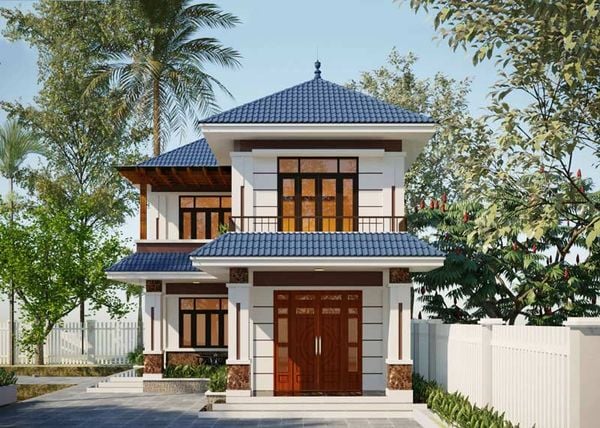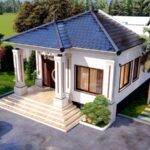Keep Your Home Cool Without Air Conditioning
Facing the sea, the south orientation takes advantage of the dominant wind from the East Sea, bringing cool breezes in the summer. This orientation avoids harsh sunlight in the morning and afternoon, keeping the house comfortable and pleasant.

South-facing homes reduce the impact of cold winds from the north in winter and hot winds from the west in summer. This orientation provides a balanced climate, suitable for the Vietnamese weather conditions.
Plant Trees Around Your Home
Trees filter the air, provide shade, and cool the surroundings. Use climbing plants such as bougainvillea, Chinese wisteria, and sky potato to block direct sunlight on walls. Alternatively, plant large trees like mango, banyan, milky pine, or coconut to create natural shade.
Design for Ventilation and Natural Wind Utilization
Install large windows to allow for a breezy, well-ventilated, and cool space. Use shutter or mosquito net doors: Shutters have slits that effectively block sunlight while letting the wind through. Mosquito nets also allow for open ventilation without the worry of insects.
A skylight in the center of the house provides natural light and regulates the indoor climate.
Use Insulating Materials
Paint walls with light colors: Shades like white, cream, or light gray reflect sunlight and reduce heat absorption.

For large glass windows, choose heat-resistant glass or apply heat-resistant film to reduce indoor temperatures.
For roofing, use cold-rolled steel, heat-resistant tiles, or install a layer of insulating foam underneath.
Use Curtains and Shading Wisely
Light-colored, thick curtains: Light-colored, thick fabric curtains will block sunlight and keep the room cool. Wooden or bamboo blinds: These options reduce heat while maintaining airflow.
Water Cooling
Water features: Construct a small water feature or fish pond near the house to cool the surrounding air.
Mist cooling: A mist cooling system in the garden or patio can quickly lower temperatures on hot days.
Notes on Keeping Your Home Cool
Consider Your Local Climate and Home’s Characteristics
In areas with prolonged hot weather, prioritize passive cooling methods such as natural ventilation, effective insulation, skylights, or well-designed porches. These methods provide a more sustainable solution than relying solely on artificial cooling equipment.

Main living areas should be positioned to catch natural breezes, avoiding multiple windows on the west or southwest sides, which receive intense afternoon sunlight.
Choose Suitable Building Materials
Materials with high heat reflectivity and low thermal conductivity, such as lightweight bricks, autoclaved aerated concrete, insulated glass, and heat-resistant paint, will minimize heat absorption and maintain stable indoor temperatures.
Arrange Your Indoor Space
Position main living areas to catch natural breezes, and avoid multiple windows on the west or southwest sides, which receive direct afternoon sunlight. Create open spaces, airy corridors, or skylights combined with greenery to regulate temperatures and improve air quality.
Choose the Right Plants for Your Environment and Maintenance Capabilities
Large trees can be placed in the garden to provide shade, while climbing plants or shrubs can be grown on balconies, window sills, or pergolas to reduce direct heat radiation on walls.






































